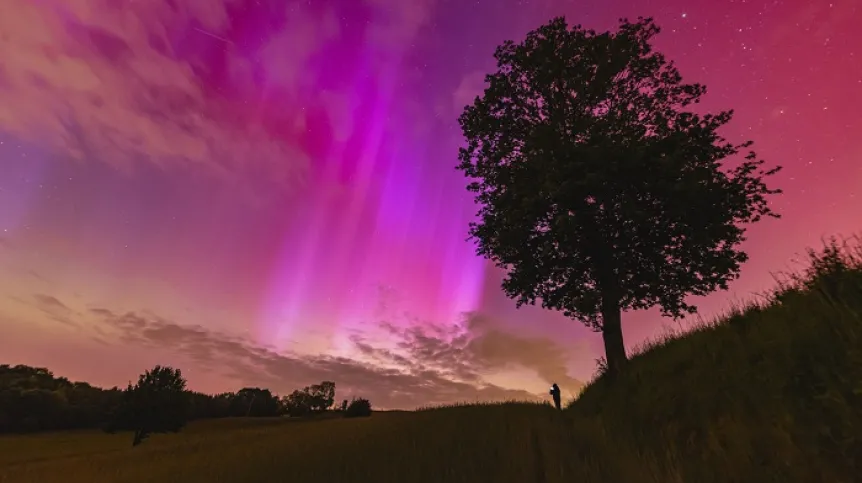
Mariusz Durlej, an astrophotographer from Poland, was the author of NASA's Astronomy Picture of the Day on May 12. The selected photo shows the aurora borealis seen from the town of Pogrzebień (Racibórz District) in Silesia.
The aurora appeared over Poland on May 10 this year, as a result of an extremely strong geomagnetic storm (G5). The event that could be observed in the sky 'is a real phenomenon (it was the strongest storm in the last 30 years) and does not usually occur to such an extent in these latitudes', Durlej says.
'This is the most important distinction in astrophotography. Every day, hundreds, if not thousands, of photos from all over the world are sent to NASA editors', says Durlej. 'This is a dream come true for me and a great incentive to take better photos of the night sky and celestial phenomena’.
Two other photographs by the astrophotographer, who has been photographing the sky for several years, have previously been selected as AAPOD2 - Amateur Astronomy Photo of the Day.
Durlej lives in Silesia, in Racibórz. 'The sky in this region is very heavily polluted by light. Unfortunately, this region is not very suitable for photographing the Milky Way and you have to go to darker regions of Poland - such as the Tatra Mountains, Bieszczady Mountains, the Żywiec region, or Lower Silesia. However, away from cities and under a dark sky, in Silesia you can successfully do deep space astrophotography - galaxies, nebulae - which I am currently trying to develop. I am also expanding my knowledge of solar photography', he says.
Durlej was inspired by the sky at a young age, when he was 16-17; initially, he was simply interested in observing the sky. 'I am now 43 years old. At that time, unfortunately, I did not have funds to buy a decent telescope. It was only in 2017 that such an opportunity arose’. HIs passion for observations quickly turned into a passion for taking photos of the sky, whose 'mystery and vastness of space' delight the author.
Durlej took his first steps in astrophotography in 2017. 'I was taking photos sporadically, at that time I was learning how to use the equipment and general photography. A lot of progress took place in 2021, when my photos started to look quite good and my development has accelerated since then', he says.
In 2017, on December 26, he photographed the gases of a ballistic missile launched from the Kapustin Yar rocket launch complex.
View the author's works on Instagram - https://www.instagram.com/mariusz_durlej_astrophoto/ (PAP)
bar/ kap/
tr. RL













